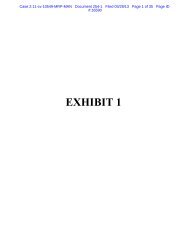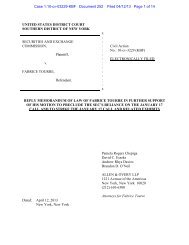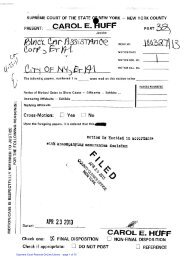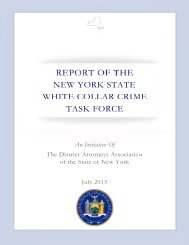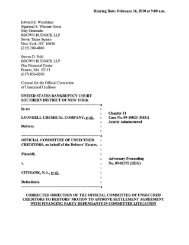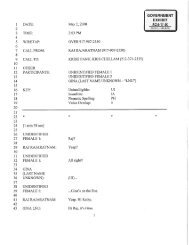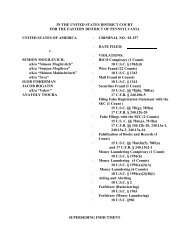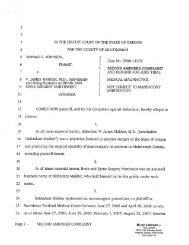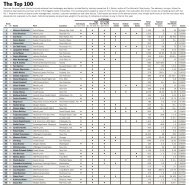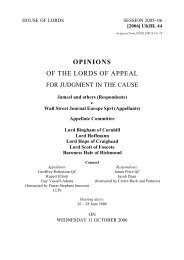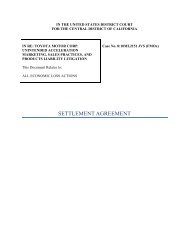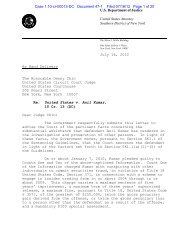Salz Review - Wall Street Journal
Salz Review - Wall Street Journal
Salz Review - Wall Street Journal
Create successful ePaper yourself
Turn your PDF publications into a flip-book with our unique Google optimized e-Paper software.
217<br />
<strong>Salz</strong> <strong>Review</strong><br />
An Independent <strong>Review</strong> of Barclays’ Business Practices<br />
Regulatory Capital<br />
Barclays’ tier 1 regulatory capital ratio has varied over the last decade, from 8.2% in 2002,<br />
to 7.6% in 2007 and 13.3% in 2012. A significant restructuring of the balance sheet<br />
(increasing shareholders’ equity and reducing the total balance sheet size) led to a<br />
significant increase in capital ratios in 2009.<br />
There has been considerable debate concerning bank regulatory capital ratios, which are<br />
recommended by the Bank for International Settlements or Basel Committee on Banking<br />
Supervision and implemented by national regulators. In the European Union, these are<br />
translated into Capital Requirements Directives.<br />
Under the original Basel I Accord from 1988, banks were required to have a capital ratio<br />
(percentage of capital to risk weighted assets) of 8%, of which core capital (tier 1) had to be<br />
4%. Assets were weighted according to relatively simple rules, such as 20% for OECD<br />
governments, 50% for residential mortgages and 100% for other assets. Tier 2 capital<br />
comprised certain reserves, hybrid capital investments and subordinated debt.<br />
Basel II then required the capital ratio to be no lower than 8%, divided into two tiers, and<br />
required banks to have a minimum level of common equity (2%) and tier 1 capital (4%). It<br />
came into force at various dates. Basel II attempted to adjust risk weighted assets based on<br />
credit, market and operational risk. Banks could use, subject to regulatory consent,<br />
advanced measurements based on their own models or standardised (non-modelled)<br />
approaches. Basel II also mandated more disclosures.<br />
Basel III, when fully implemented, will introduce a number of important changes to<br />
strengthen the quality and quantity of capital, including more capital for counterparty risk<br />
and derivatives, procyclicality and capital conservation buffers and other liquidity and<br />
funding ratios. Originally, it required an increase by 2015 in common equity from 2% to<br />
4.5% (plus a capital buffer of 2.5% to total 7%), and tier 1 capital increased from 4% to 6%<br />
(plus other capital buffers). The minimum total capital ratio remained at 8% (plus capital<br />
buffers). The EU is currently working on Capital Requirement Directive IV to implement<br />
Basel III, plus changes to corporate governance and remuneration.



